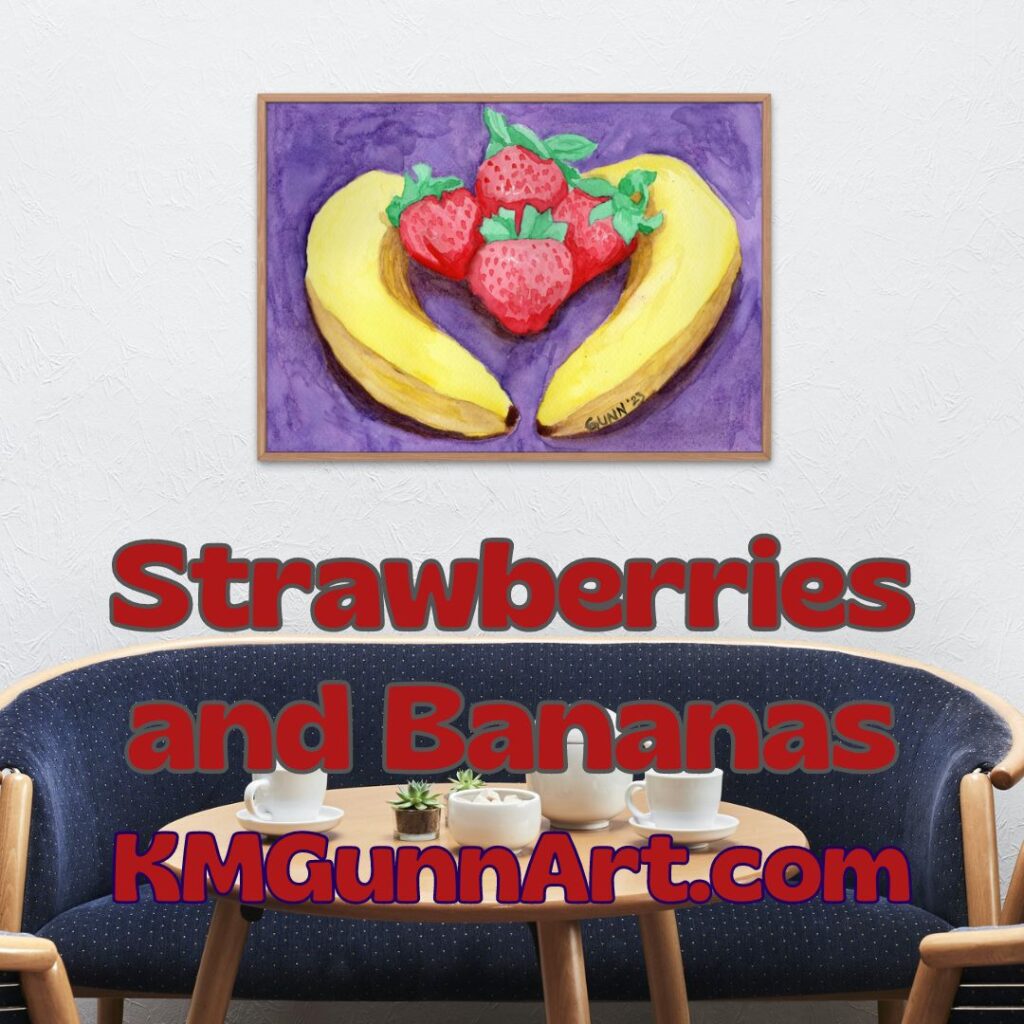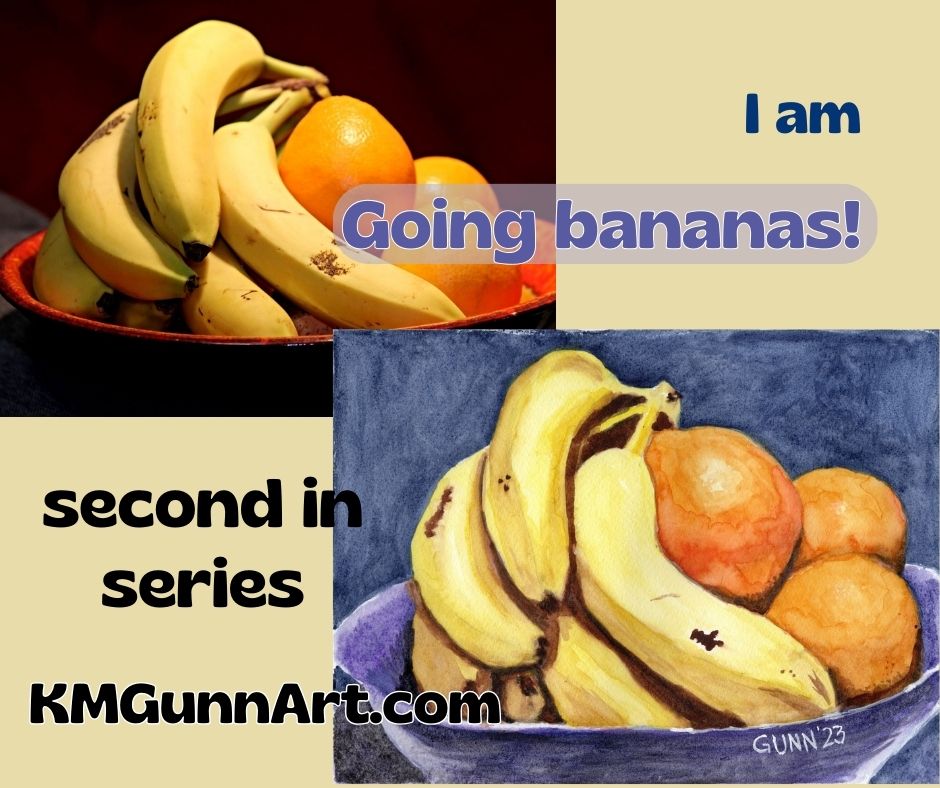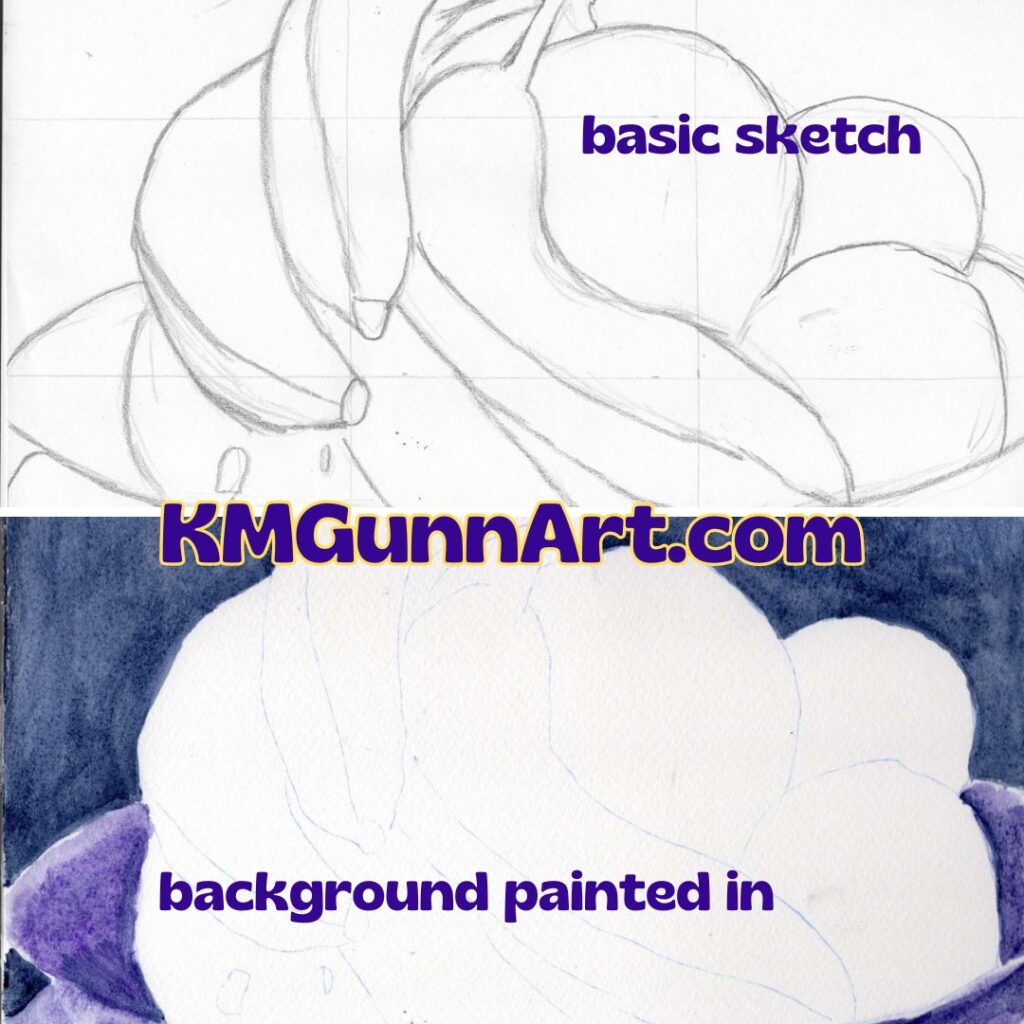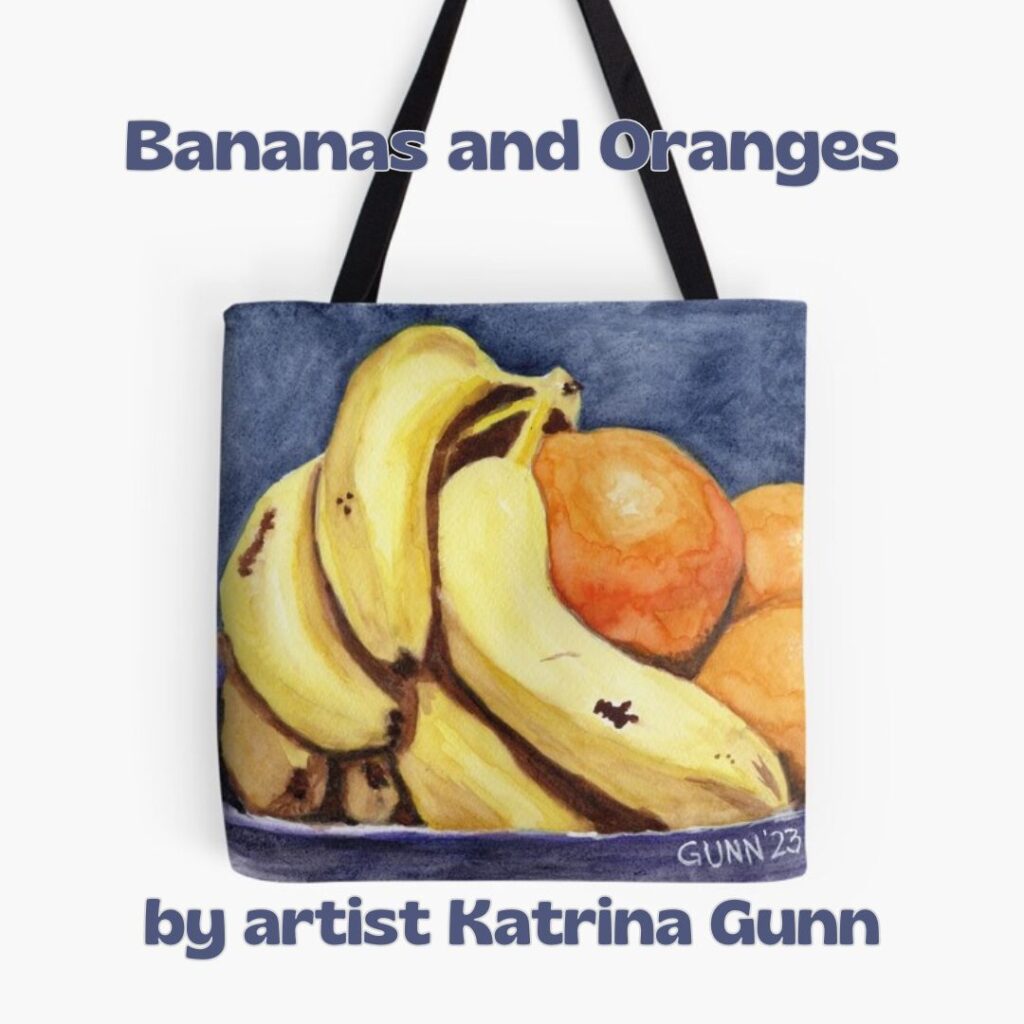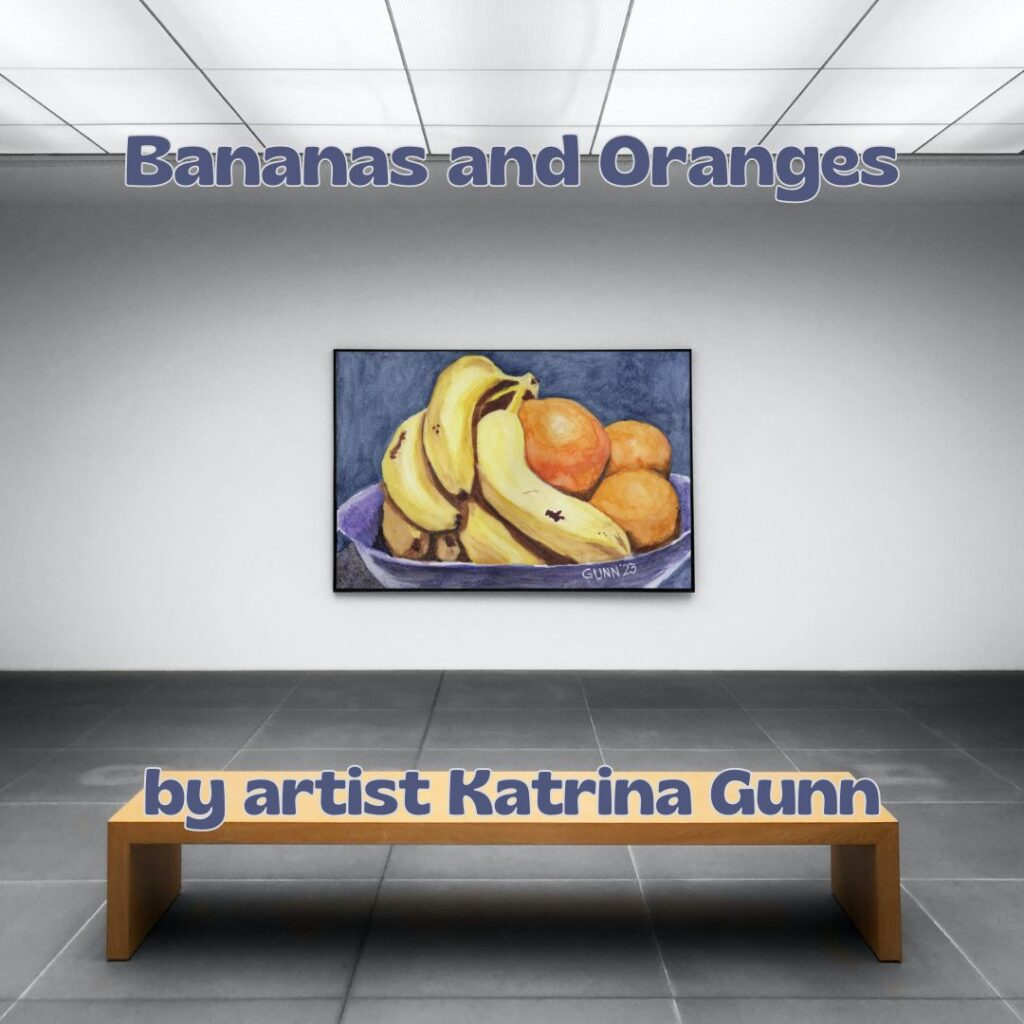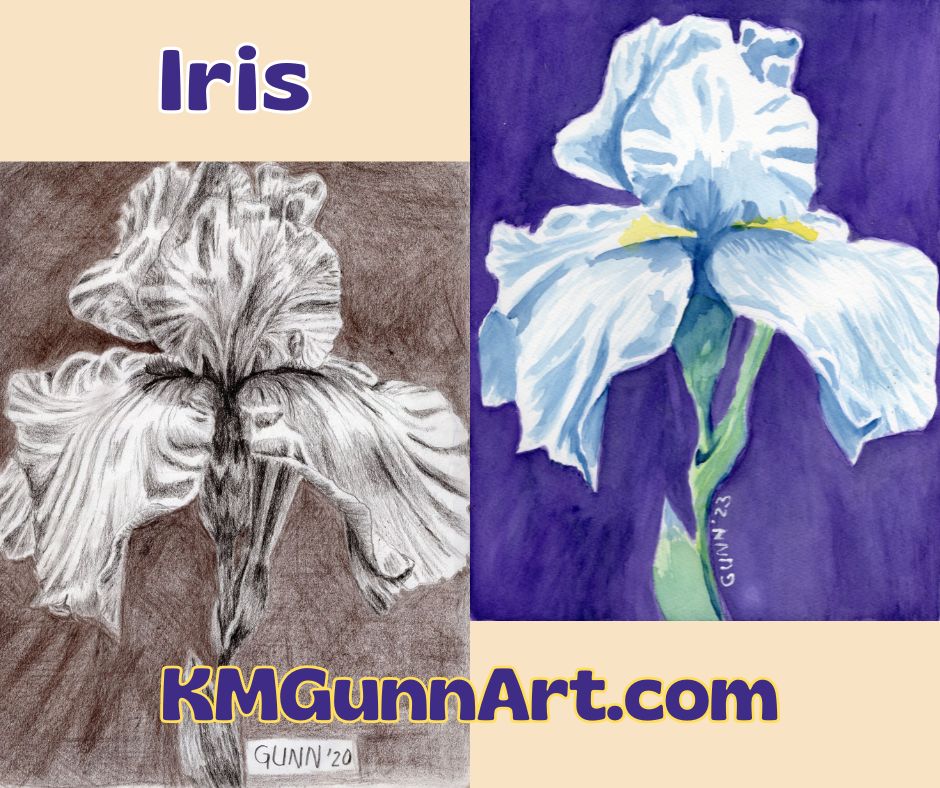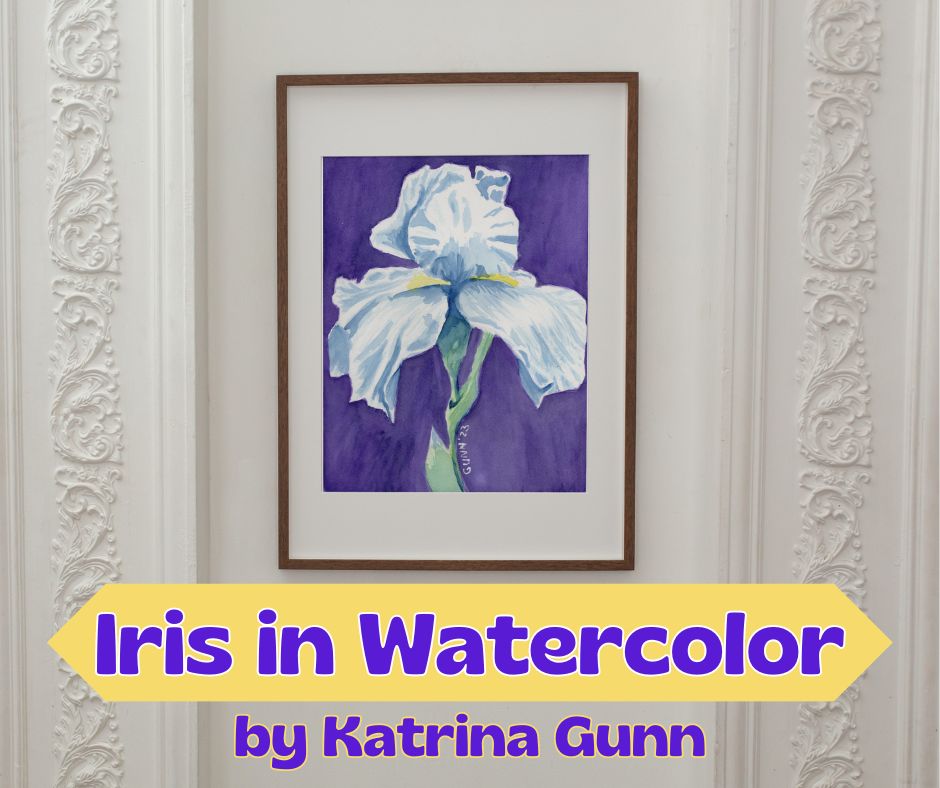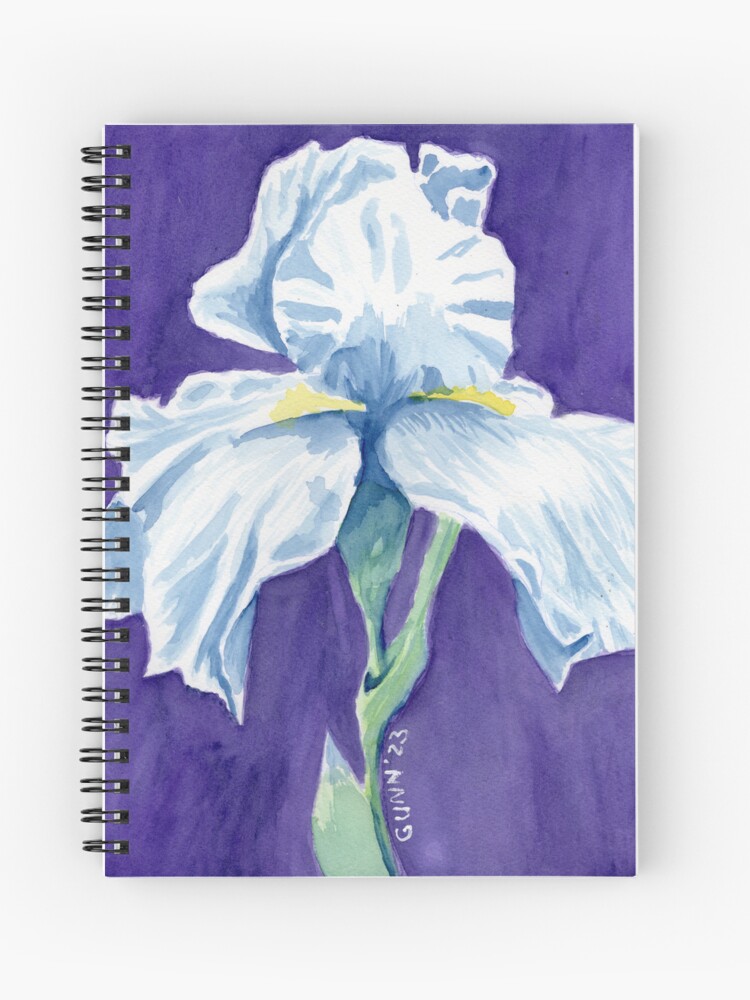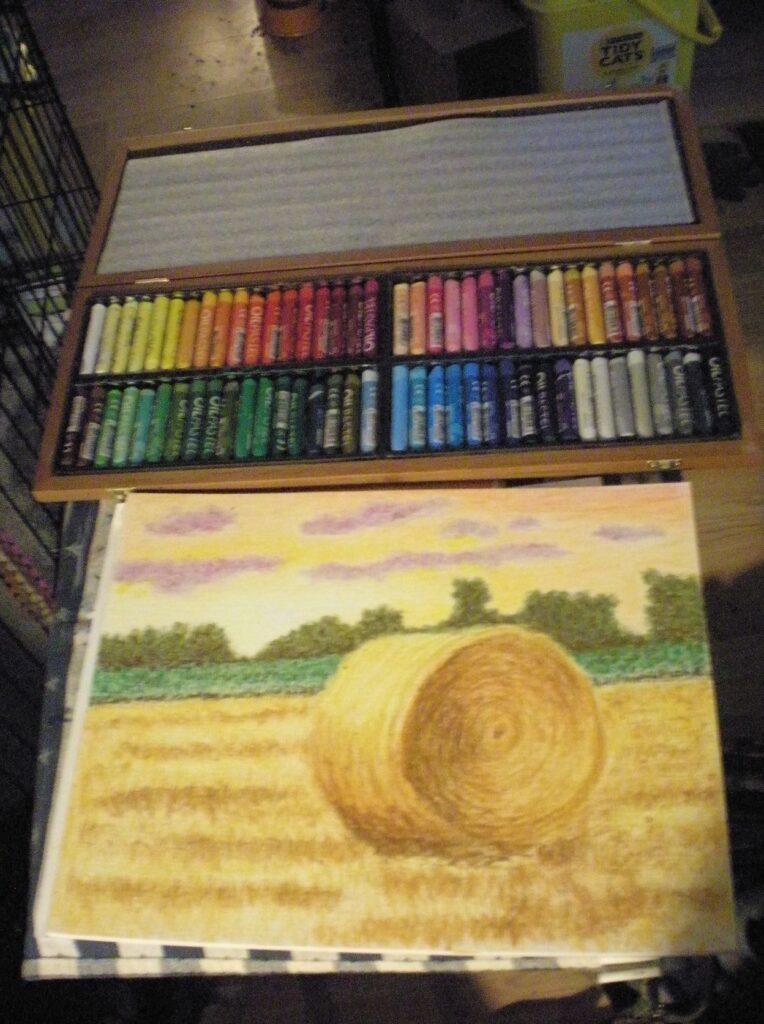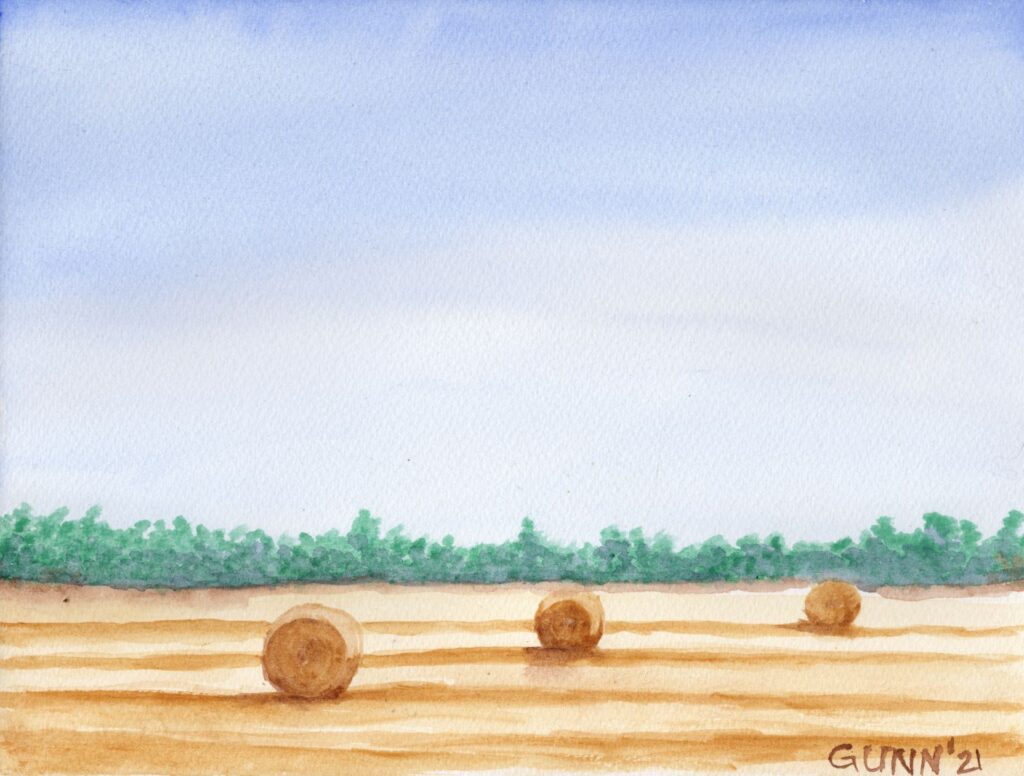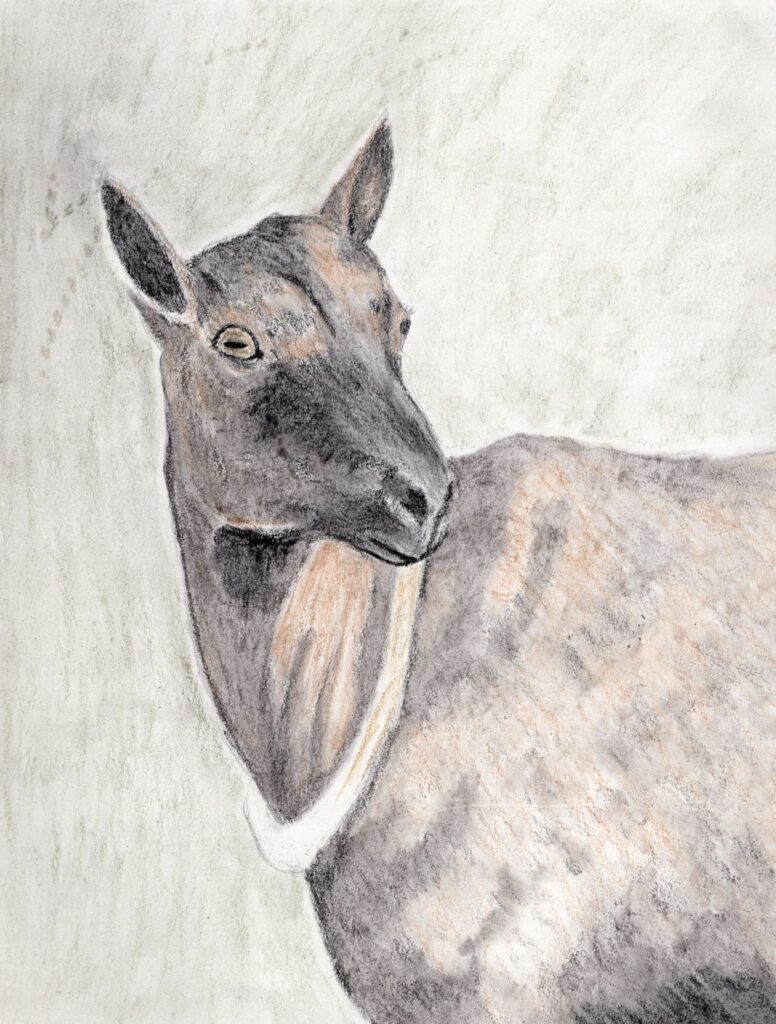If this image of my most-recent calla lilies painting looks familiar, it’s because I used the same reference photo as I did for the tinted charcoal calla lilies drawing over the summer (of 2022). This time I flipped the image (reversed it) so the front calla lily opens the other direction, and then I omitted the third flower in the back. I did this one in oil pastel, and I really do love working with my oil pastels, so of course it just made sense to do a calla lilies piece with them.
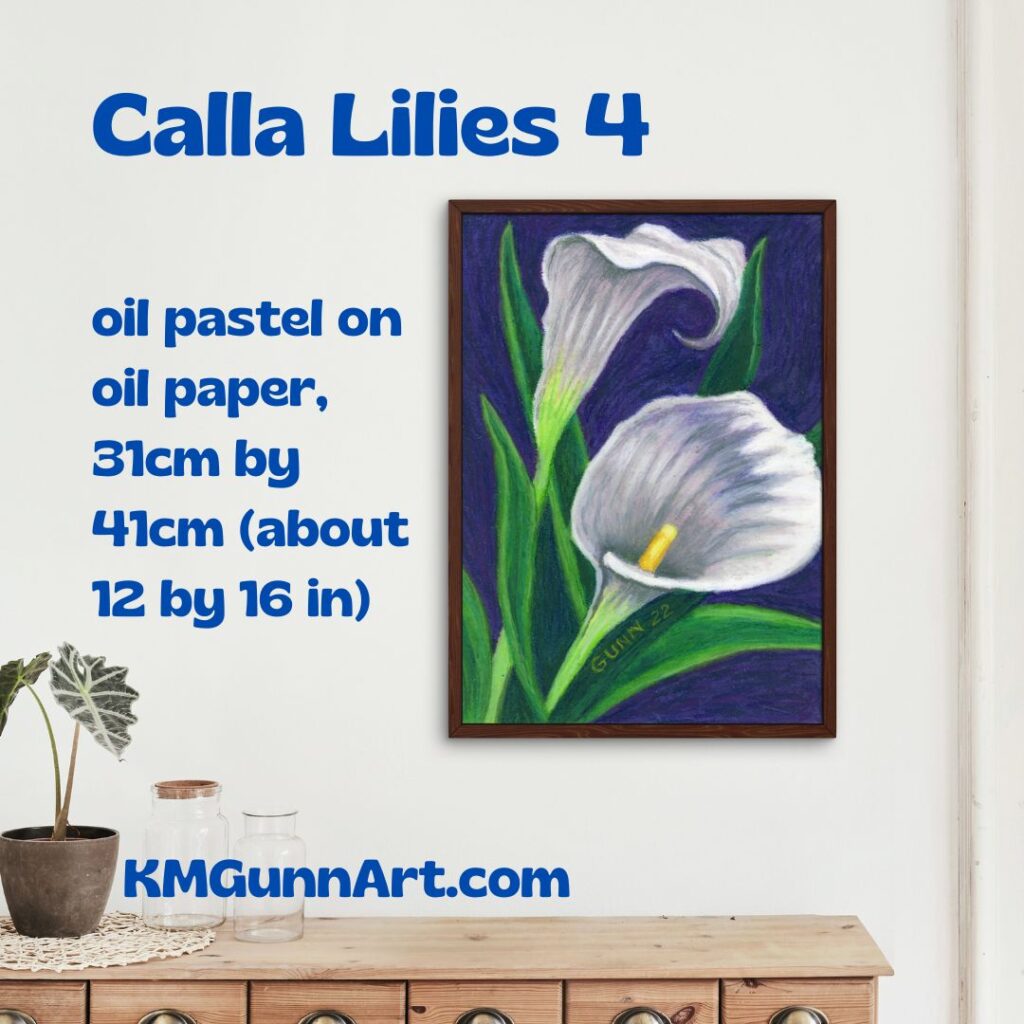
Also, I used my Arches oil paper for the first time on this piece, and love it. It is not a standard size, even in metric, but I figure Arches does that to give a bit of room to tape the paper to a board if that is how you like to work. It’s likely meant to be practice paper for oil paints.
First, a quick confession: I did this over a year ago, as you can likely tell from the date on the signature. It is now almost a year and a half later that I finally get to writing it up. Maybe I’ll do better in 2024? It could happen.
In-progress photos
Since I decided to flip the original image, I needed to do the basic drawing from scratch again – which is not a hardship for me. I did my usual 3 by 3 grid to make sure everything fits on the page as I want it to do, and then started on the background because that would still be my darkest dark on the image. First I used my darkest purple, then my darkest blue.
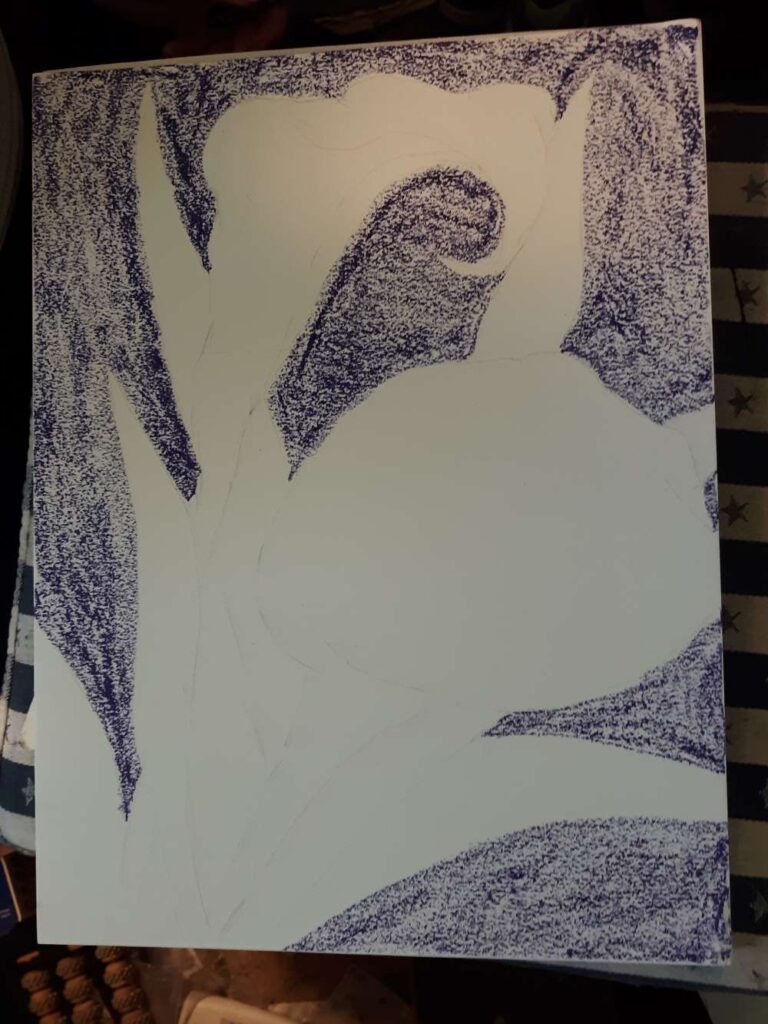
I seem to be missing a couple or more in-progress snapshots. I was so certain I had more, but not even Windows 10 search can find them. To summarize the missing photos, I worked on the greenery after the background, then worked on the flowers last. Then I went over everything again, to even up how thickly I put the oil pastel on – especially for the calla lilies.
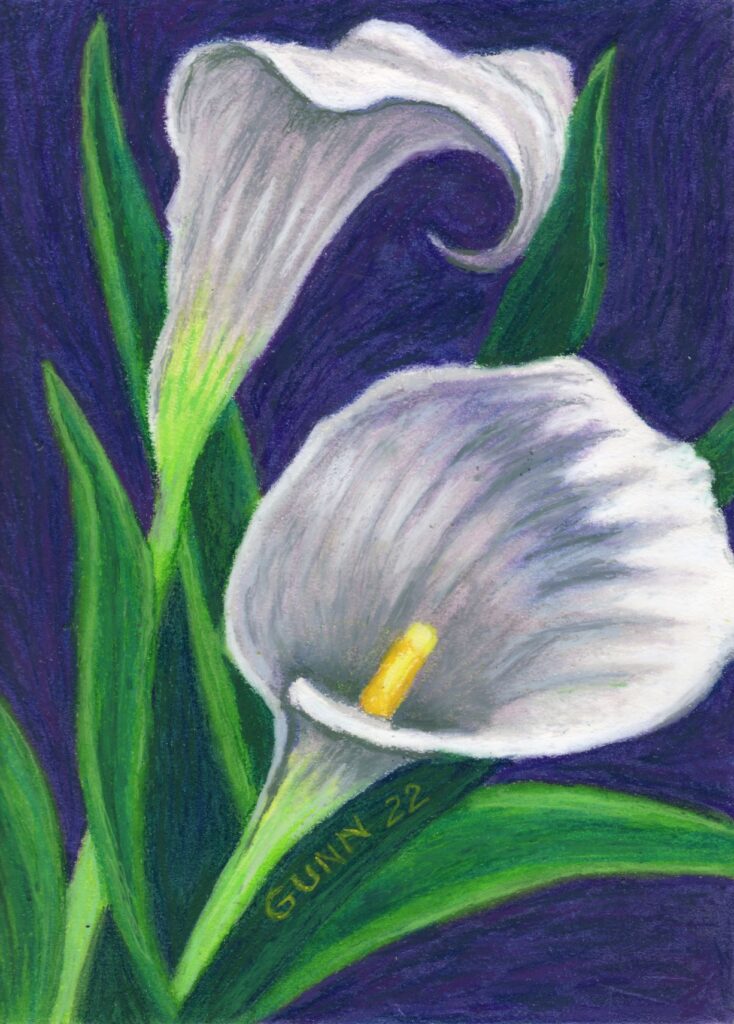
Purchase the original artwork or get art prints
As of posting, the original artwork is available to purchase through Daily Paintworks, which handles the transaction through PayPal and just makes it easier on both of us. The actual size is 31.0 cm by 41.1 cm, which is approximately 12-3/16 inches by 16-3/16 inches. Not a standard size here in the US, so it will likely need a custom matting to fit a standard frame or a custom frame if you aren’t fond of using matboard. I sealed this piece with matte finish Mod Podge to prevent smearing.
For art prints, I like Pixels which is part of Fine Art America. You can order a wall print from as small as 6 x 8 inches up to as large as 43 x 60 inches. It is also available on various home decor items, stationary, and of course puzzles. If I had a cat-free zone, I would happily get puzzles of my artwork, but more on that thought later.
Apparel and accessories with this art printed on them
When it comes to artwork on apparel, my mother and sister both like Redbubble’s print shop. They have a lot of options available, and since this pastel painting is vertically aligned, it fits on most of them. When my sister said she was trying to decide which apparel product to get this image printed on, I whipped up a simple vertical video to hopefully help her choose. She ended up buying the A-line dress.



